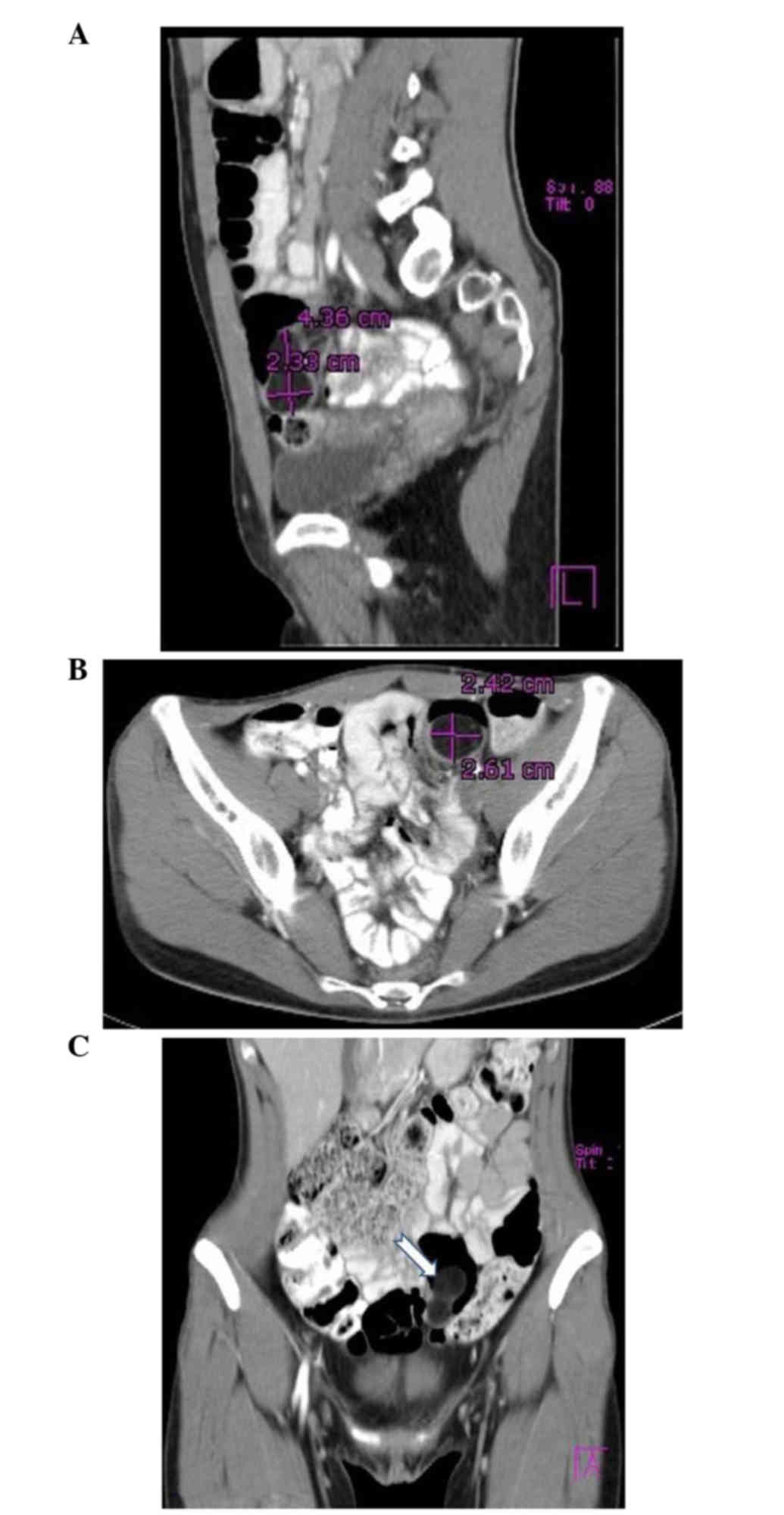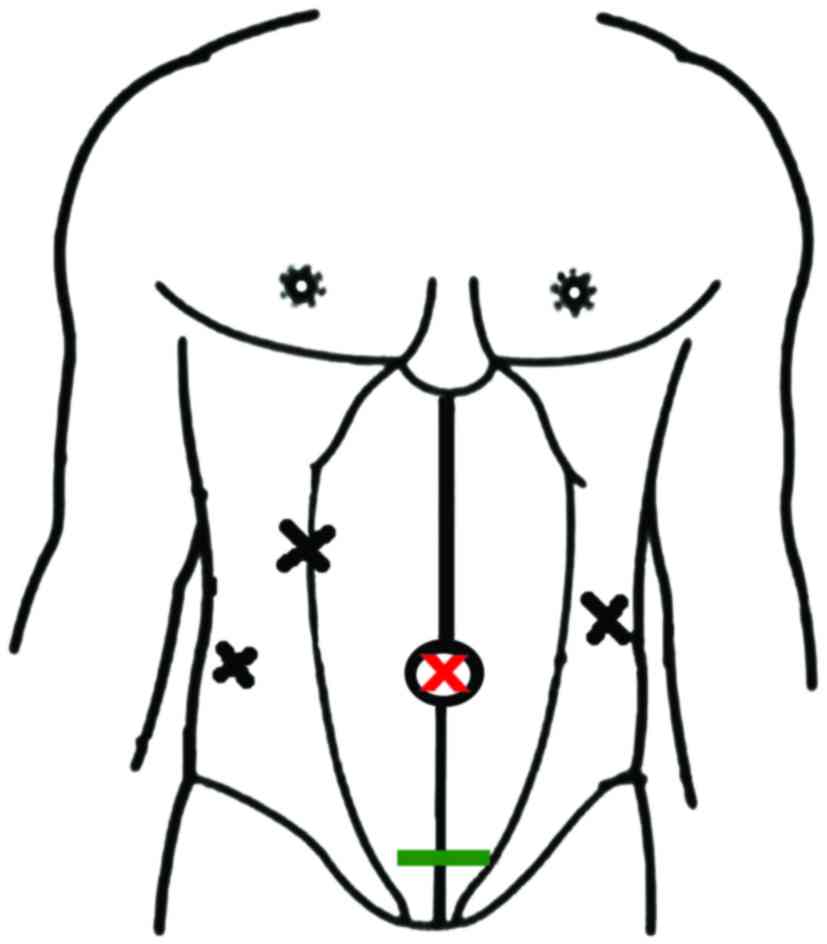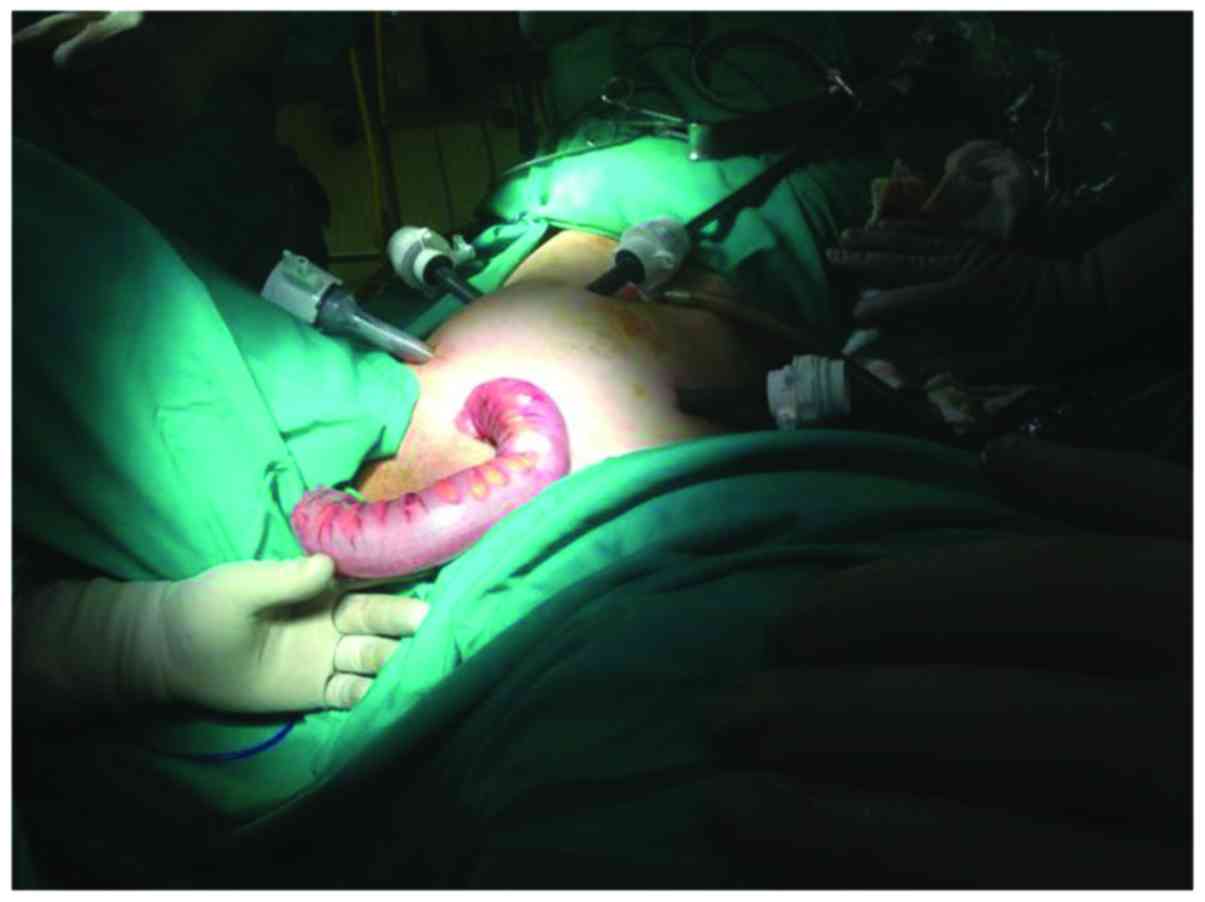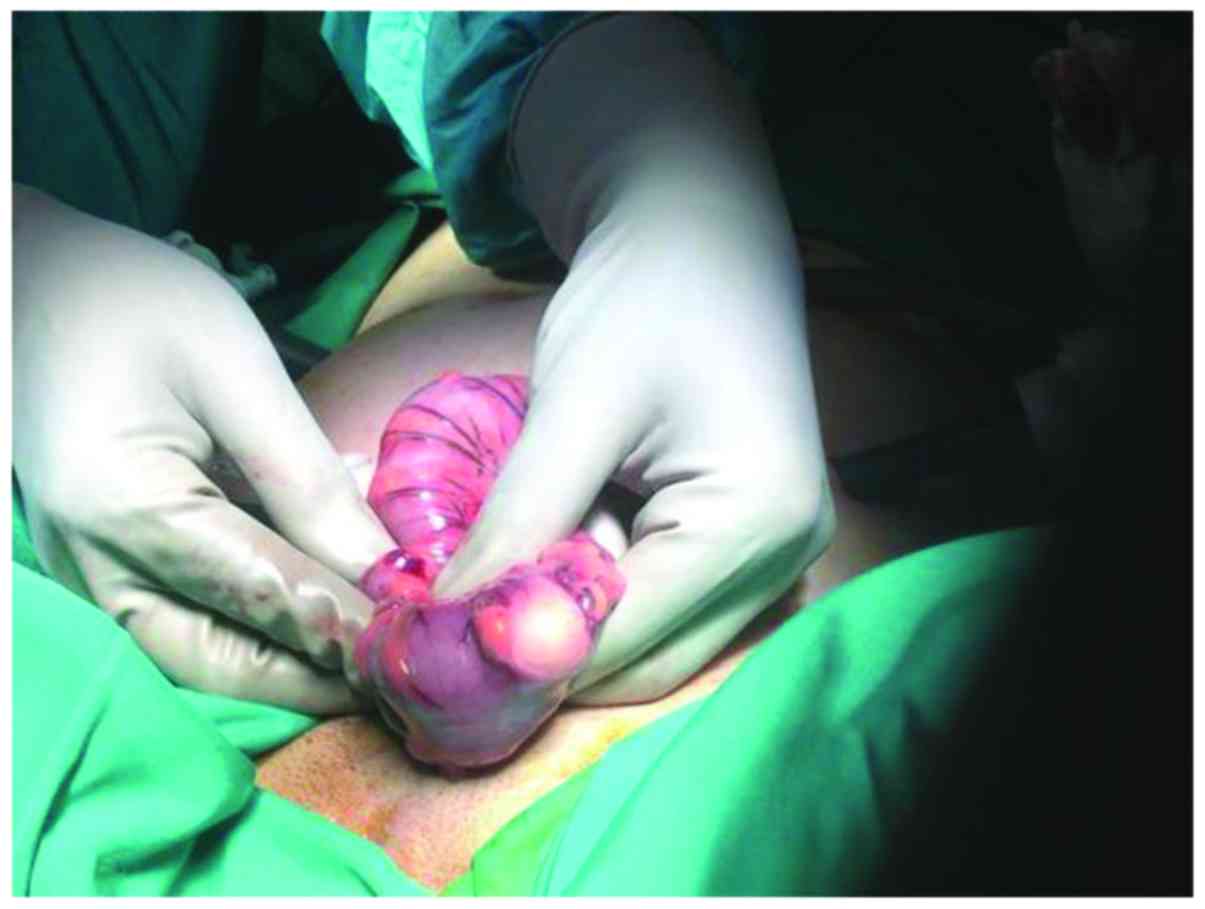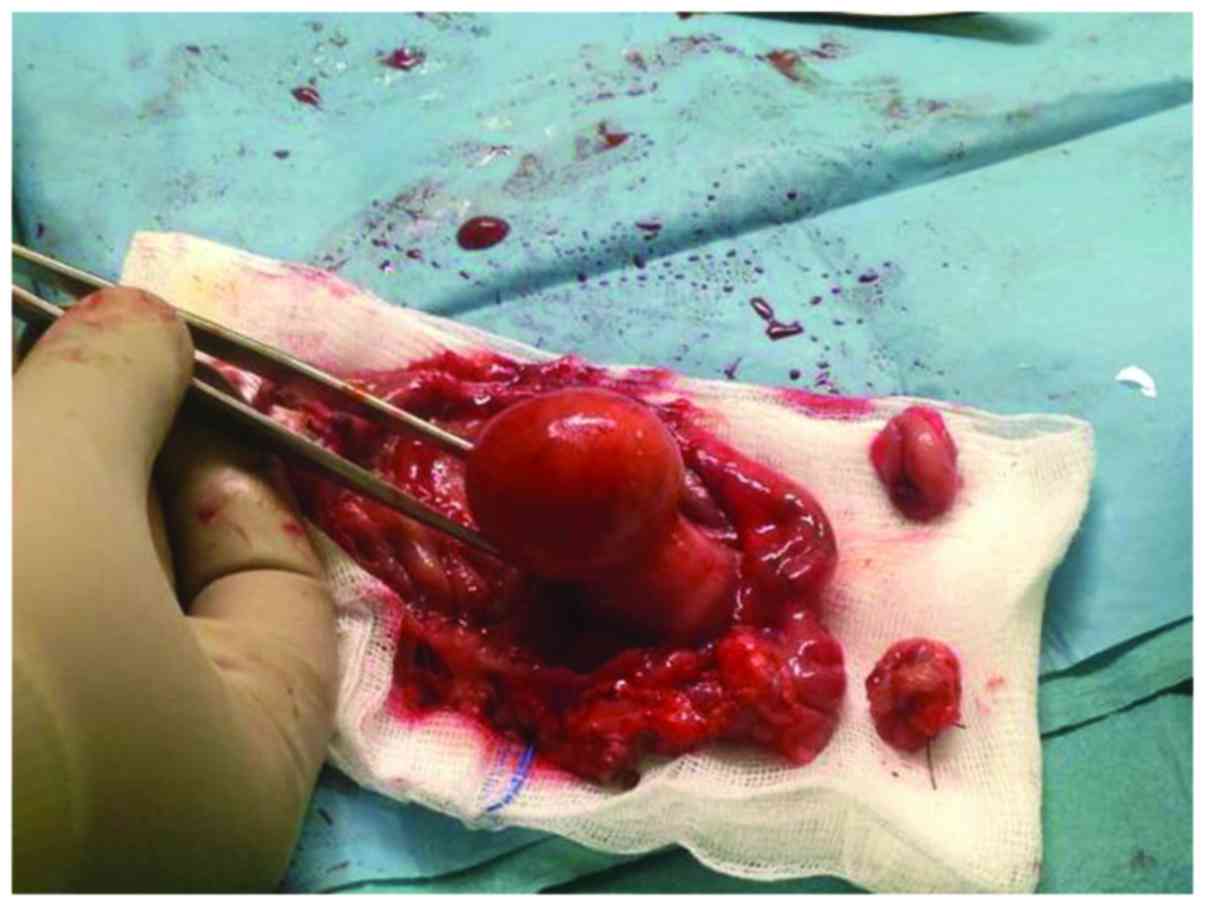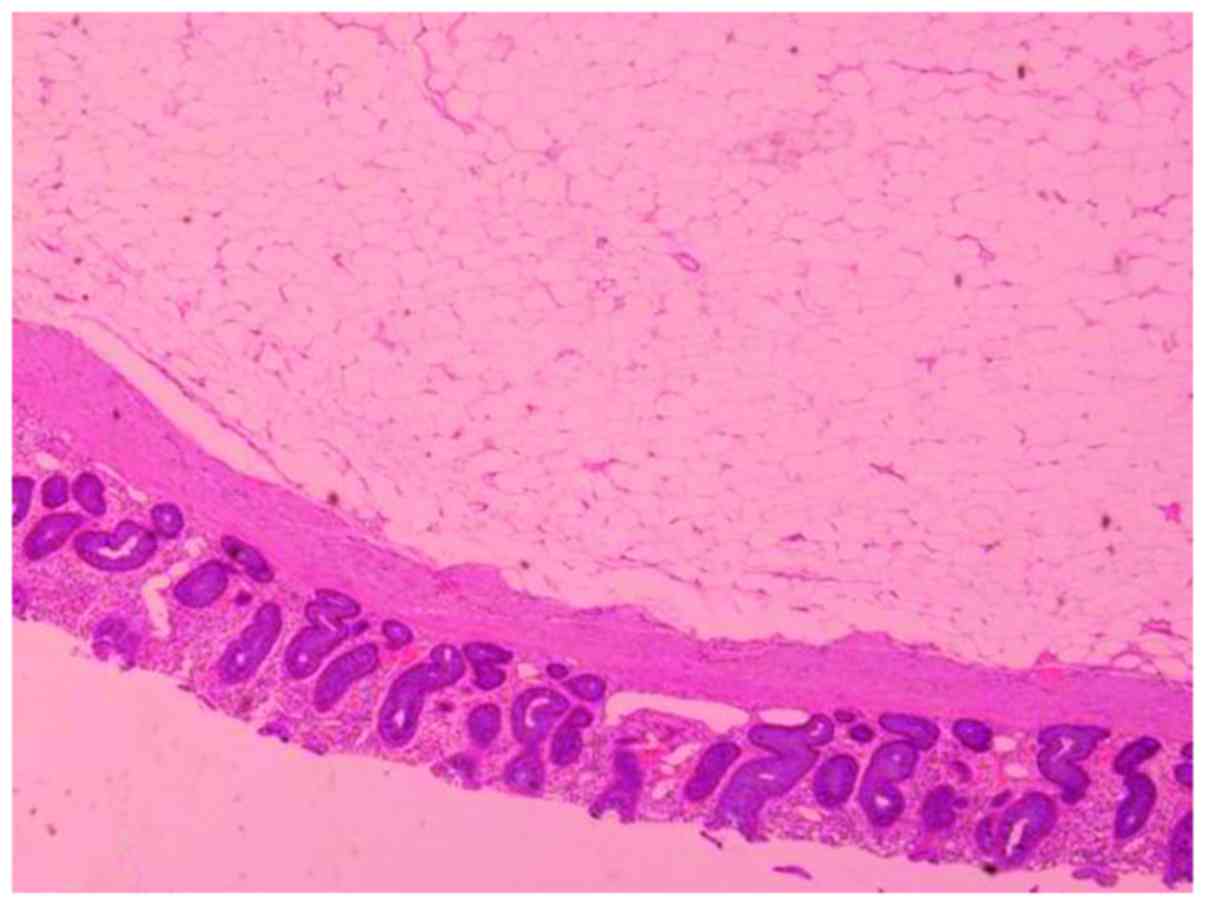Laparoscopic resection of a sigmoid colon lipoma in a young female patient: A case report and review of the literature
- Authors:
- Published online on: January 11, 2017 https://doi.org/10.3892/ol.2017.5594
- Pages: 1303-1306
Metrics: Total
Views: 0 (Spandidos Publications: | PMC Statistics: )
Total PDF Downloads: 0 (Spandidos Publications: | PMC Statistics: )
Abstract
Lipomas of the sigmoid colon are rare entities. The present case describes a 27‑year‑old Caucasian woman who underwent a laparoscopic sigmoidectomy following the detection of a giant lipoma. The young patient was referred to the Emergency Department of the University Hospital of Heraklion (Crete, Greece) in May 2013 after experiencing intermittent abdominal cramping during defecation, and altering episodes of diarrhea and constipation. In addition, the patient described the protrusion of a solid tissue mass shaped like a ‘champagne bottle cork’ from the anus following defecation. These symptoms had been present for 1 month prior to referral. Physical examination was unremarkable. An urgent colonoscopy revealed a polypoid lesion measuring 2.5 cm in diameter in the sigmoid colon, which was located ~12 cm above the anal ring, with a smooth surface and tissue fragility. Tissue samples were obtained and sent for histopathological analysis. Preoperative contrast‑enhanced computed tomography was performed urgently and confirmed the presence of a solid mass in the sigmoid colon without enlargement of regional lymph nodes. Following adequate preparation, the patient underwent a laparoscopic sigmoidectomy with intracorporeal termino‑terminal colorectal anastomosis, with the use of a circular stapler. The patient had a positive post‑operative outcome without complications and was discharged on day 4 post‑surgery in an optimal condition. Histopathological examination of the surgical specimen demonstrated a pedunculated lipoma shaped like a ‘champagne bottle cork’. The tumor consisted of mature adipose cells. The overlying colonic mucosa showed hyperplastic crypts with regenerative changes. In the lamina propria mild inflammatory infiltration was observed. At 2 years post‑surgery, the patient remains asymptomatic without any clinical evidence of recurrence.



